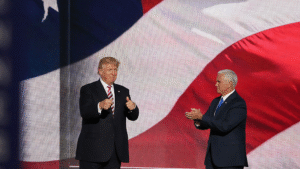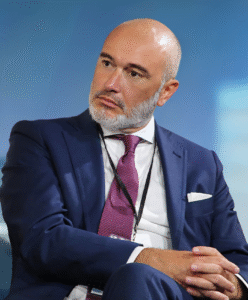
UK Grocery Inflation Eases to 5% in August 2025
UK grocery inflation eases to 5% in August 2025, showing slight relief. Consumers shift to value shopping as branded items rise and dining out declines.

In today’s corporate landscape, finding great leaders is hard—but keeping them is even more challenging. Companies invest millions in leadership development, yet many of their best executives leave within a few years. Why?
The High Cost of Leadership Turnover
Losing top executives isn’t just an inconvenience; it’s a financial and operational nightmare. Studies estimate that replacing a C-suite executive can cost up to 213% of their annual salary due to recruitment, training, and lost productivity. More importantly, leadership changes often shake employee morale, disrupt strategy execution, and impact long-term growth.
What’s Driving Executives Away?
Several factors contribute to leadership attrition, but these stand out as the most common reasons:
✅ Lack of Growth Opportunities – Even at the top, leaders crave professional development. Companies that fail to challenge their executives with new responsibilities risk losing them to competitors offering better career trajectories.
✅ Corporate Bureaucracy and Red Tape – Decision-making bottlenecks and outdated processes frustrate high-performing leaders. Many leave in search of more agile and forward-thinking organizations.
✅ Misalignment of Values – Executives who feel their personal leadership philosophy clashes with company culture or ethics often look for workplaces that align with their vision.
✅ Compensation and Benefits Gaps – Money isn’t everything, but it matters. When executives see more lucrative offers elsewhere—especially with better equity stakes, performance bonuses, and flexible benefits—they are tempted to move.
✅ Work-Life Imbalance and Burnout – Leadership roles demand long hours, constant pressure, and high stress. Companies that don’t actively support executive well-being risk losing their most valuable talent to burnout.
Many corporations rely on outdated retention strategies that no longer resonate with modern leaders. Increasing salaries or offering bigger bonuses may keep an executive for a while, but it doesn’t address their deeper needs. Instead, businesses must shift toward holistic retention strategies beyond compensation.
How Can Companies Retain Their Best Executives?
To keep top leadership engaged and committed, organizations need a multi-faceted approach:
🚀 Create Clear Career Progression Paths – Even C-suite executives need to know their next steps. Leadership coaching, cross-functional exposure, and potential board opportunities can keep them invested in long-term growth.
🏆 Foster an Empowering Work Culture – High-level executives want autonomy. Trust them to make decisions and remove excessive bureaucratic barriers that slow innovation.
🤝 Ensure Value and Mission Alignment – Organizations with a strong, authentic culture retain leaders who believe in their vision. Regular strategy discussions and transparent communication help keep executives aligned with the company’s long-term goals.
💰 Redefine Compensation Beyond Salary – Competitive pay is crucial, but equity, performance-based incentives, and benefits like mental health support, flexible work policies, and sabbaticals can make a big difference in long-term retention.
🛡 Prioritize Executive Well-being – Burnout is accurate; even the most ambitious leaders need balance. Encouraging reasonable workloads, promoting mental health resources, and allowing flexible schedules can improve retention.
Final Thoughts
The leadership gap is widening as companies struggle to retain their best executives. The old playbook of throwing money at the problem no longer works. Businesses that truly value their leadership must create growth-driven, flexible, and supportive environments—or risk losing their top talent to more progressive competitors.

UK grocery inflation eases to 5% in August 2025, showing slight relief. Consumers shift to value shopping as branded items rise and dining out declines.

Zelenskiy–Trump summit boosts markets as equities rise and the dollar steadies amid growing peace hopes. Investors await Fed insights at Jackson Hole for further direction.

Statistics Canada is investigating an accidental early release of June manufacturing data, raising concerns over data governance and market integrity. The agency has launched an internal review to strengthen its publishing protocols.

Investor confidence in France is deteriorating as political gridlock and budgetary uncertainty deepen.

June 09, 2025: Canada will host the 50th G7 Summit from June 15 to 17 in Kananaskis, Alberta, amid heightened global tensions and economic rifts.

May 30, 2025: Canada’s economy expanded at an annualized rate of 2.2% in the first quarter of 2025, outperforming the market forecast of 1.7%.

At seventeen, Professor Richard Rose stepped into a world few adults dare to navigate: the world of children fractured by trauma. He wasn’t a clinician then, nor a scholar. He was simply a young man with a heart tuned to the quiet ache of others.

Following a distinguished Law Enforcement career Joe McGee founded The Securitatem Group to provide contemporary global operational specialist security and specialist security training products and services for private clients, corporate organisations, and Government bodies. They deliver a wide range of services, including complete end-to-end protection packages, close protection, residential security, protection drivers, and online and physical installations. They provide covert and overt investigations and specialist surveillance services with a Broad range of weapons and tactical-based training, including conflict management, risk and threat management, tactical training, tactical medicine, and command and control training.

Jay Wright, CEO and Co-Owner of Virgin Wines infectious energy, enthusiasm, passion and drive has been instrumental in creating an environment that encourages talent to thrive and a culture that puts the customer at the very heart of every decision-making process.

Fabio de Concilio is the visionary CEO & Chairman of the Board at Farmacosmo, a leading organization dedicated to mental health and community support services. With a deep commitment to identifying and meeting customer needs, Fabio ensures that high standards are maintained across the board.

Leave us a message
Subscribe
Fill the form our team will contact you
Advertise with us
Fill the form our team will contact you